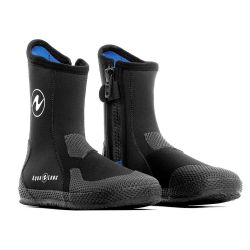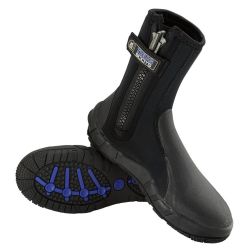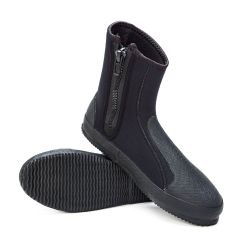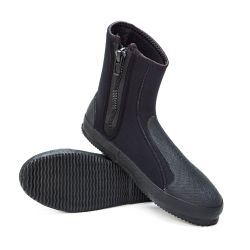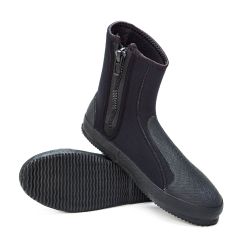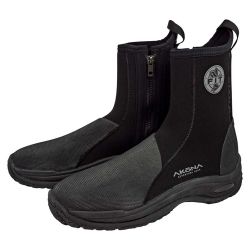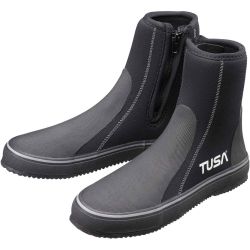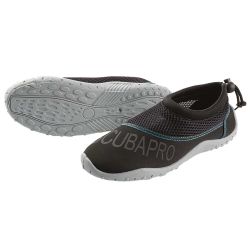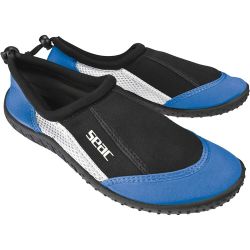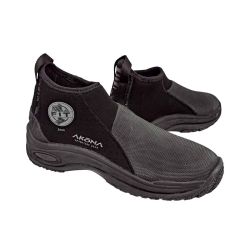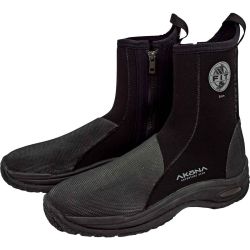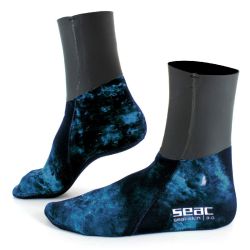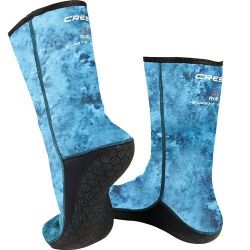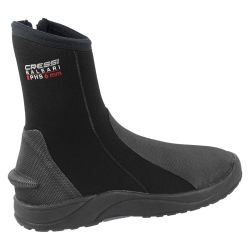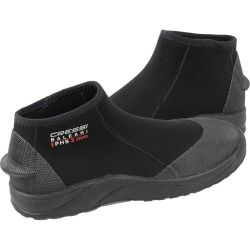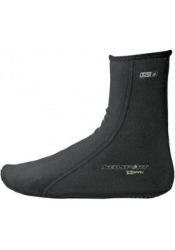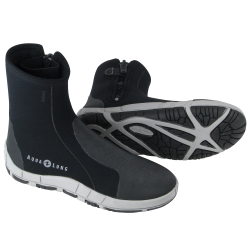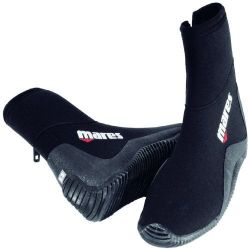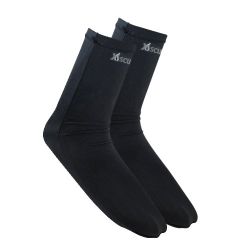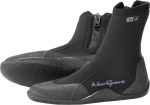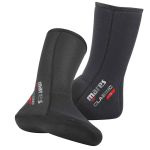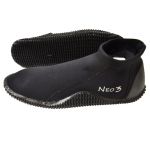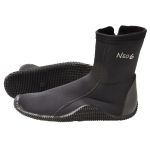We use cookies to enhance your experience on our website. By clicking “I Agree,” you consent to our use of cookies in accordance with our Privacy Policy. If you choose not to allow cookies on our website, some of the website’s functions may not be available to you. Learn more.
Dive Boots
Dive Boots: Essential for Diving Comfort and Safety
Dive boots ensure your comfort and safety during scuba diving and snorkeling adventures. They keep your feet warm, protect against rocky terrain, and enhance stability underwater.
What Are Dive Boots?
Dive boots are essentially the right shoes for your wetsuit. You need them to protect your feet from the cold and insulate them while you dive. They also help you get safely in the water when you walk on rocks and along the shore. Some people skip the dive boots in very warm, tropical waters, but we think it’s best to include them in your gear for a better and safer diving experience.
Choosing the Right Dive Boots
Factors such as water temperature and personal preferences determine the appropriate dive boots. Our diverse collection, featuring top brands like XS Scuba and Aqua Lung, caters to various diving conditions to ensure you find the perfect fit.
Dive boots come with a range of features, including boot thickness, sole type, zipper options, and materials. A beginner may find it hard to navigate these features, but understanding them is the only way to select the most suitable pair.
Understanding Dive Boot Features: How Do I Choose My Dive Boots?
Read on to understand the nuances of dive boot design in order to enhance your diving experience and maximize comfort in any underwater environment.
Boot thickness
The goal of a dive boot is to insulate. To be successful, the insulating property must match the temperature in the water. Dive boots come in several thicknesses, ranging from 2mm to 7mm. The lower end is for warm, tropical waters; the higher end is for very cold water; and the middle range is for temperate waters. Depending on the diving areas you will be exploring, pick the right thickness.
Zipper or not
Most dive boots come with zippers which make them easy to put on and take off. Others are slipped on the foot. Some people prefer how snug dive boots with zippers feel on their feet. Others like the ease of using slip-on boots.
Sole type
Dive boots come with hard soles or soft soles. Soft soles are great if you are diving off a boat and you won’t have to walk on the beach, rocks, or anything hard. Hard dive boots are great if you are going to walk on the shore, particularly if there are rocks and hard surfaces that might hurt your feet.
What’s the Difference Between Dive Boots And Dive Socks?
Dive boots and dive socks serve different purposes. Dive boots are meant to be walked in; they are sturdy and keep your feet warm and protected when you walk. They are made of neoprene and come in several thicknesses to maximize insulation.
Dive socks are meant to keep your feet warm but are not supposed to be used for walking, as they are soft and flexible but not strong. Think about it this way: would you wear socks to walk on the street? Probably not. However, you would use them to keep you warm at home.
How Do You Wear Dive Boots?
Dive boots are meant to be worn under the wetsuit. To do that, roll the ankles of the wetsuit and put on your dive boots. Roll the ankles over the dive boots to create water insulation in the dive boots. When you jump in the water, water will roll on the wetsuit and not enter your boots.
Dive boots are worn with open-heel fins, as these have a larger foot pocket compared to full-foot fins. Thus, they have enough space to accommodate the added thickness of the boot.
Conversely, dive socks are worn with full-foot fins to protect the foot, toes, and ankles from hard surfaces.
Make sure your dive boots fit perfectly
You want your dive boots to fit perfectly — not too tight, or it will make diving and exploring uncomfortable: the last thing you want is to feel your toes being curled inside the dive boot.
Not too loose either, because you will feel you are constantly trying to re-adjust the dive boot on your foot.
When you try your diving boots, try them with the same types of socks — in terms of thickness — you will probably be using during your diving explorations. You will have a very accurate sense of how the dive boots feel on your feet.
The perfect fit is important because it affects how you glide under the water. The fit and interaction with your open-heel fins directly affect your mobility and energy efficiency underwater. A well-fitting pair of dive boots can significantly improve your propulsion and control. Together, they impact your overall diving experience and make it an absolute success.
Shop Now
Visit our dive shop for all your scuba diving and snorkeling needs. With our extensive selection of products, commitment to customer support, and free shipping, we aim to make your shopping experience seamless and enjoyable.
Explore our new arrivals and discover the perfect dive boots to enhance your underwater adventures. The fun doesn't stop there, though! Dive into complimentary free diving scuba lessons. Plus, score free shipping on orders over $25, because why should the adventure cost extra?
If you have any questions or need assistance, don't hesitate to reach out to our dedicated customer service team. Happy diving!
FAQs
What thickness of dive boots should I choose?
The thickness you need depends on the water temperature where you'll be diving. For warm waters, boots that are 2 to 3mm thick are usually sufficient. For colder waters, you might need boots that are 5mm to 7mm thick for proper thermal protection.
Can I use dive boots for snorkeling?
Yes, you can use dive boots for snorkeling, especially if you're snorkeling in cooler water or rocky areas where foot protection is necessary. You can wear them with open-heel snorkeling fins just like with scuba fins.
How do I care for my dive boots?
After each use, rinse your dive boots thoroughly with fresh water to remove salt, chlorine, or debris. Allow them to dry completely in a shaded, well-ventilated area before storing them away to prevent mold and odor development. Avoid direct sunlight as it can degrade the neoprene material over time.
Can I walk long distances in my dive boots?
While dive boots are designed to protect your feet during short walks to and from dive sites, they are not meant for long-distance walking or hiking. Their soles are durable against rocks and rough surfaces but may wear out quickly on long walks on hard surfaces. They might also feel uncomfortable after a while as they are not designed to be walked in for long.
What types of dive boots do you offer?
We offer a diverse range of dive boots suitable for various conditions, including warm-water and cold-water diving. Our collection includes options from leading brands like XS Scuba and Aqua Lung, ensuring quality and durability.
Do you offer free shipping?
Yes, we provide free shipping on orders over $25, making your shopping experience with us even more convenient and cost-effective.
Can I find other scuba gear and accessories in your store?
Absolutely! In addition to dive boots, we offer a comprehensive selection of scuba gear and accessories, including wetsuits, masks, gloves, snorkeling sets, rash guards, and more.
Do you have specific products for kids and women?
Yes, we understand the importance of personal care and safety, which is why we offer kids' wetsuits and women's wetsuits tailored to fit their specific needs and sizes.







